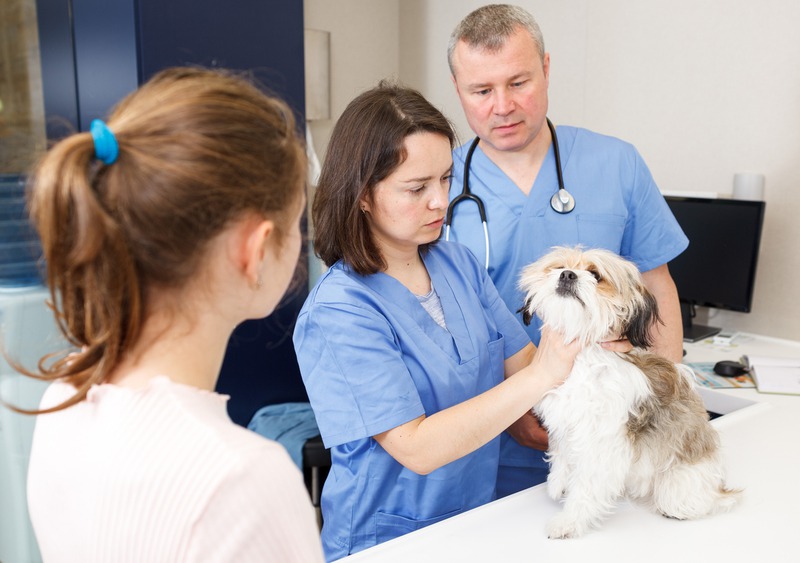Our pets bring us joy, companionship, and much fun. But did you know their oral health is just as crucial as their cuddles? Yep, maintaining those pearly whites isn’t just important for humans. Our furry friends need dental care to lead happy, healthy lives. Neglecting their oral health can lead to painful problems and even life-threatening conditions. But don’t worry; we’re here to help guide you through easy and effective ways to keep your pet’s teeth in top shape. So, let’s chat about how we can prevent dental disasters and keep our pets smiling wide.
How Can You Prevent Oral Health Issues in Pets?
We all want what’s best for our pets, including keeping their teeth strong and gums healthy. Preventive measures can significantly reduce the risk of dental disease, which is quite common in pets. So, let’s get straight to safeguarding our furry companions’ oral well-being.
1. Regular Check-Ups With Your Vet
Just like us, pets need regular dental check-ups. These visits to the vet can catch any budding issues before they bloom into something more serious. During a check-up, vets look for signs of dental distress like plaque build-up, inflamed gums, and potential infections. A professional cleaning from your vet can also go a long time, removing any hidden nasties that at-home brushing can miss. For specialized dental services, you might visit websites like https://www.wolfeanimal.com/site/veterinary-services-jesup/dentistry, where you can get detailed information about pet oral care.
2. Brushing Your Pet’s Teeth
The most direct approach to prevent oral health problems is to brush your pet’s teeth regularly. I know what you’re thinking – it sounds like a hassle, right? But with some patience and training, you and your pet can get used to the routine. Start slow, use pet-friendly toothpaste (never human toothpaste, as that can be toxic to them), and pick a brush that’s comfortable for the size of your pet’s mouth. Consistency is key here.
3. Chew Toys and Dental Treats
Chew toys aren’t just for keeping your pets entertained. They can help clean their teeth. Chewing on the right toys can reduce plaque and tartar build-up. Dental treats, on the other hand, are formulated to keep those chompers in good condition. They often contain ingredients that freshen breath and clean teeth. Just be mindful of the number of treats you give – you don’t want to replace one health issue with another, like obesity.
4. Quality Diet for Dental Health
What your pet eats makes a big difference in their oral health. Some pet foods are specifically designed to help clean teeth as they eat. Dry foods can be better for dental health than wet foods, as they’re less likely to stick to teeth. However, ensure you’re fed a balanced diet that meets all their nutritional needs – consult your vet for the best options.
5. Keeping an Eye Out for Dental Disease
Becoming familiar with the signs of dental disease can help you catch problems early. Bad breath is often the first indicator that something’s up. If you notice any changes in your pet’s eating habits, like difficulty chewing or a sudden preference for softer food, it could be a sign of pain or discomfort in their mouth. Swollen gums, discolored teeth, and any unusual drooling should also prompt a visit to the vet.
More Ways to Maintain Your Pet’s Oral Hygiene
Now that we’ve covered the basics, let’s explore some more tips for keeping your pet’s oral health in check.
Clean the Water Bowl
It might not be the first thing you think of, but clean water is essential for oral health. Bacteria can build up in your pet’s water bowl, so give it a good scrub daily. Fresh water supports overall health, which includes healthy teeth and gums.
Professional Dental Cleanings
At some point, your pet will likely need a professional dental cleaning, usually done under anesthesia. This allows the vet to thoroughly clean below the gum line and address any significant issues that aren’t visible to the naked eye.
Oral Health Supplements
You can add additives to your pet’s water or supplements to sprinkle on their food to help improve oral health. These additives can reduce plaque and tartar and are simple to include in your daily routine. Always check with your vet first to find the best option for your pet.
Teach Your Pet to Enjoy Teeth Cleaning
Training your pet to tolerate tooth brushing can make the whole process much easier. Use positive reinforcement with treats and gentle, patient guidance to make teeth cleaning a stress-free, routine part of your day-to-day.
For more tips on preventive care, like vaccines and parasite prevention for your furry friends, you can talk to your vet and learn more about it.
Remember Their Overall Well-Being
Beyond brushing teeth and regular vet visits, remember that your pet’s overall health impacts its oral health, too. Exercise, mental stimulation, and stress reduction all contribute to a happy, healthy pet with a robust immune system that can fight off dental woes.
If you’re looking for a place where your pet can get great care for their teeth and general well-being, consider services like cat & dog boarding in Jesup, GA. Your pet can enjoy a caring environment while you’re away, ensuring they stay happy and healthy.
Final Thoughts
Taking care of your pet’s oral health might seem like a big responsibility, but it can be boiled down to some simple steps. Visit the vet regularly for check-ups, keep up with daily brushings, provide suitable chew toys and dental treats, choose an appropriate diet, and stay vigilant for any signs of trouble. By taking these preventive measures, you’re not just protecting your pet’s teeth; you’re ensuring their overall happiness and longevity. Keep it simple and consistent, and you and your pet will have plenty to smile about.

